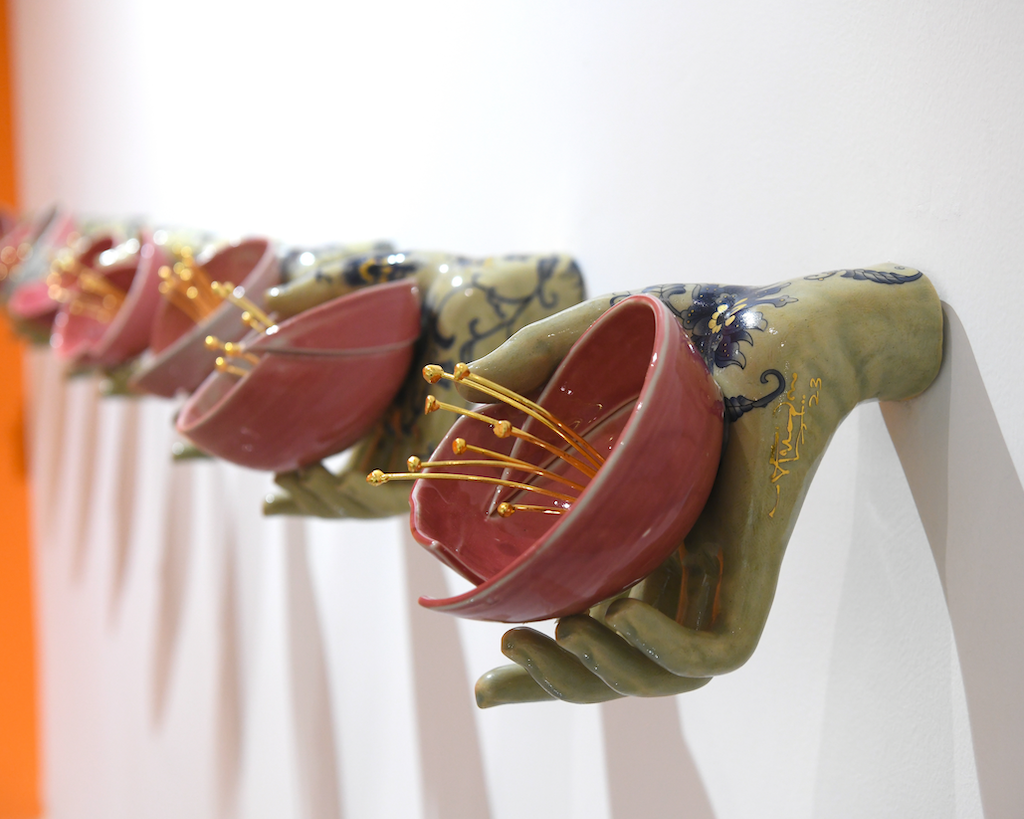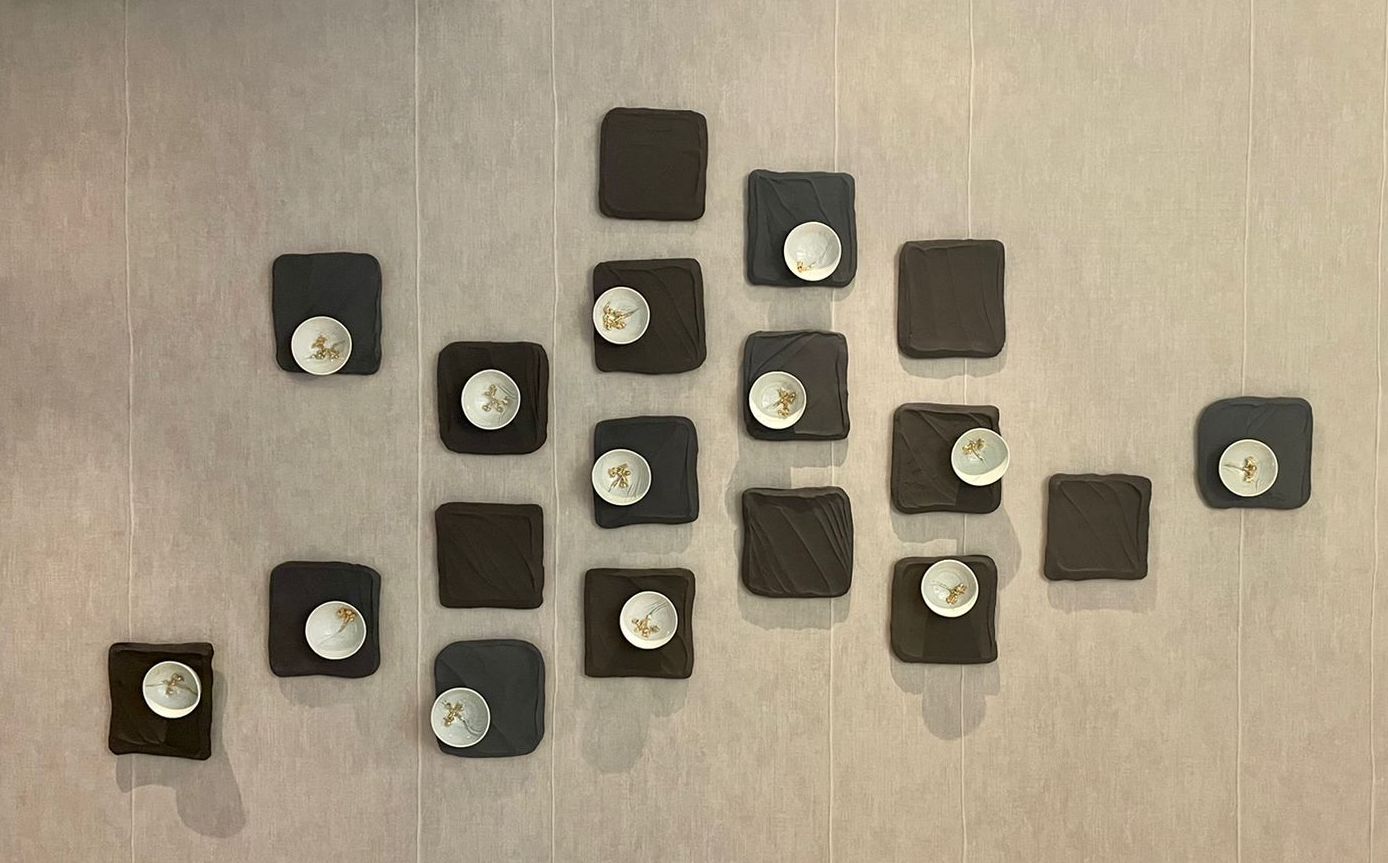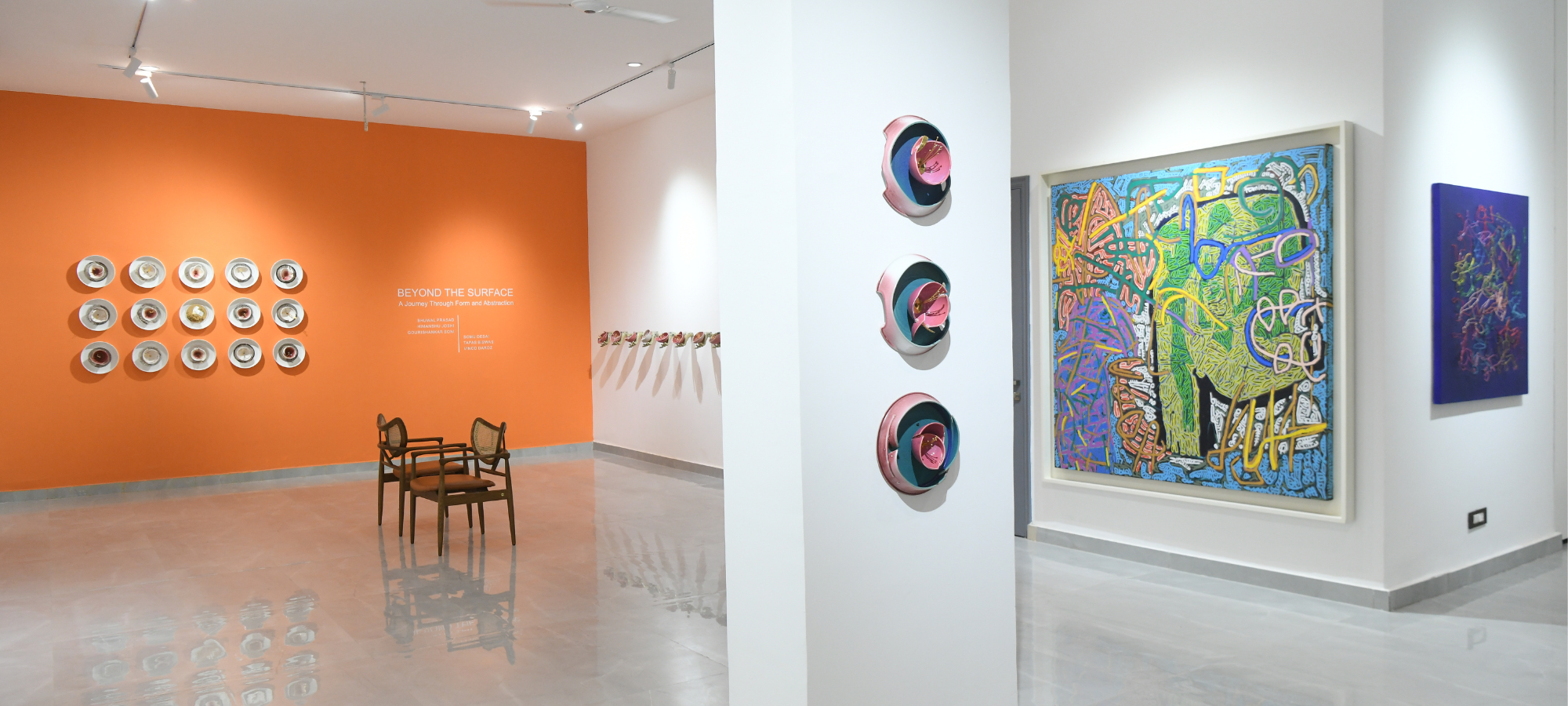Vinod Daroz hails from a family of traditional jewellers in India. Refined craftsmanship, a pristine finish to every object and an eye for detail are perhaps standards that have been imbibed from the family profession. Vinod credits his uncle P. R. Daroz and his Teacher Jyostna Bhatt, well-known ceramists in India. For introducing him to studio pottery and the medium of ceramics. After graduating from the department of sculpture at the M. S. University of Baroda in Gujarat, Vinod decided to specialise in ceramic sculpture. Vinod’s first experiments in ceramics began in the few hours after his routine studio schedule as a graduate student. After completing his post graduation, he chose to have studio in Baroda rather than closer to his hometown back in Andhra Pradesh, which has a lot to do with the availability of resources for creating ceramics. Gujarat hosts the maximum number of ceramic industries in the country. Mining in this region produces a wealth of raw materials that contribute in creating different composites of clay and similarly, the colorants used in glazes are easily available from the teeming chemical industries that produce oxides. All these factors make Gujarat one of the most conducive locations for individual studio potters to avail of their materials with relative ease from ceramic manufacturers and chemical industries. The practical convenience of being situated in Baroda, a city known for its cultural heritage has appealed to ceramists like Vinod Daroz.
Where the temple sculptures and architecture have had a deep impact on Vinod’s work, the tendency to elaborate on basic forms of vases, platters, urns and bowls draw a lyrical elaboration seen in the stone sculptures; his use of gold and copper glazes as incidental embellishments in the works echo his background of the decorative innovations seen within the jewellery making. Pattern-making and design is characteristic of art and craft traditions all over India but the repetitive elements in Vinod’s works in fact evoke aspects of recall, emphasising association with chants and meditative practices. The artist however places more importance on the symbolic interpretations of forms and images within his work. He draws a reference to Mandalas through the image of the lotus detailed on large platters, also symbolic representations of the male and female sexualities through the lingam and yoni that are seen in suggestions of floral elements and phallic forms. They all seem to point towards the concept of a universal oneness that embraces both male and female energies. The power of nature can overwhelm one to contemplate on the fundamental aspects of life and for Vinod, reflects his exploration of notions of universal peace.








